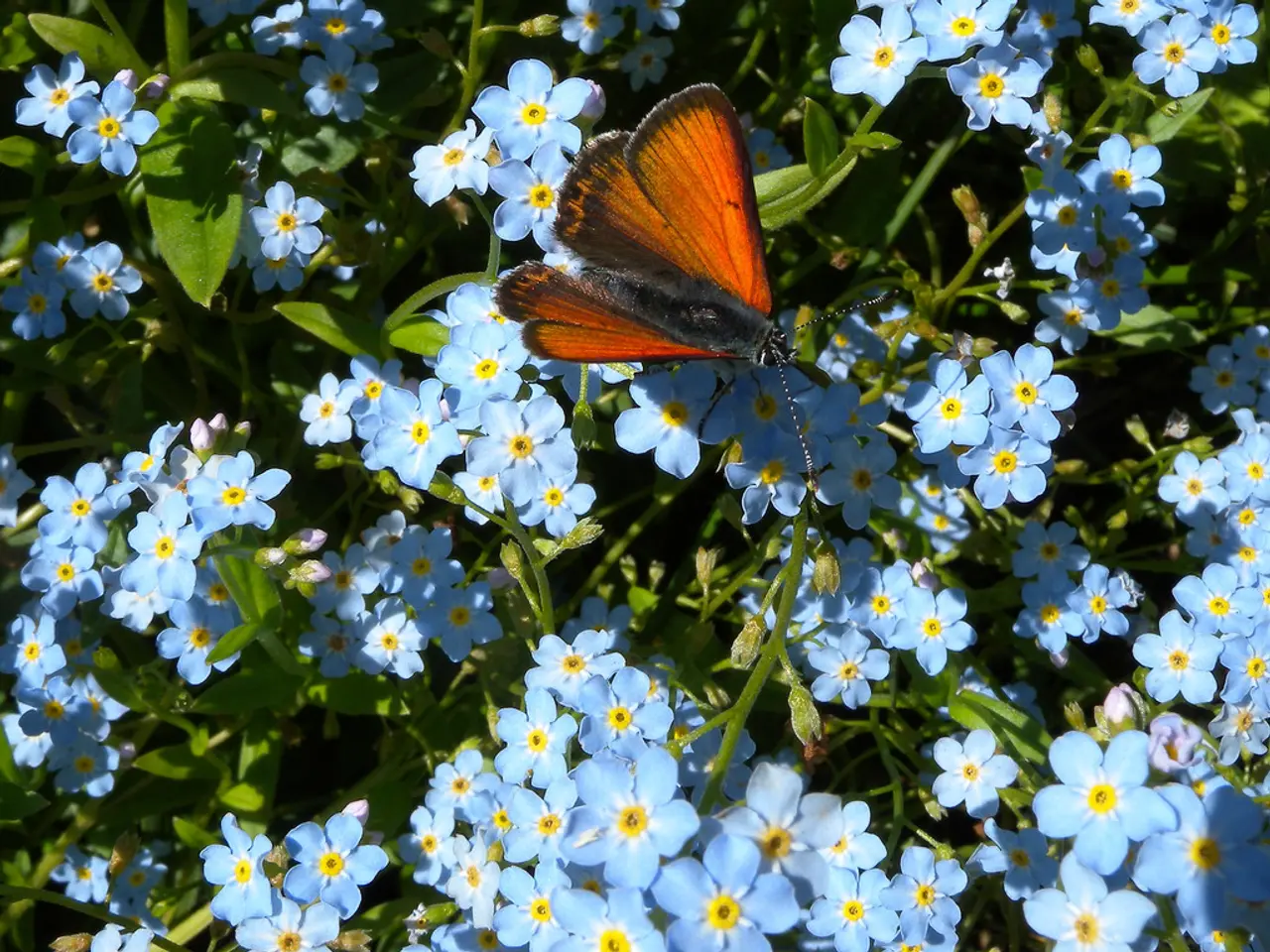Eight User-Friendly Kalanchoe Species Suitable for Any Plant Enthusiast
In the world of succulents, the Kalanchoe family stands out for its diverse range of species, each with its own unique features and care requirements. While Kalanchoe blossfeldiana, with its softly scalloped leaves and starry flowers, is a common favourite, there are several other intriguing Kalanchoe varieties that are worth exploring.
One such variety is the Kalanchoe pinnata, known for its unusual leaf structure and attractive appearance. Another popular choice is the Kalanchoe tomentosa, also known as the Panda Plant, characterised by its fuzzy, velvety leaves with brown edges, making it a hardy succulent popular for indoor growing.
Kalanchoe tessa, with its distinctive bell-shaped red flowers, thrives in bright light and can be grown in hanging pots, making it suitable for both indoor and outdoor cultivation. The Kalanchoe daigremontiana, or Devil's Backbone, is recognisable by its jagged-edged leaves with black spots beneath. It rarely blooms but produces many plantlets (suckers) along the leaf margins, making propagation straightforward.
A hybrid between Kalanchoe daigremontiana and Kalanchoe delagoensis, the Kalanchoe Pink Butterflies, is notable for pink-colored plantlets that emerge from the leaves. It is best kept in semi-shade as direct sun may be too harsh.
'Teddy Bear' and 'Chocolate Soldier' are cultivars of the Panda Plant, both featuring fuzzy, rounded leaves. The Flapjack, or the Kalanchoe luciae or Kalanchoe thyrsiflora, also known as the paddle plant, boasts saucer-shaped leaves that layer like a stack of pancakes and is almost lime green with pink tinges.
Kalanchoe 'Fire Rainbow' is a variegated hybrid with leaves in hues of ivory, green, and bright pink. Its leaves are cupped with softly serrated edges and can root when they touch the ground, producing plantlets. Kalanchoe humilis, or Desert Surprise, has thick, saucer-shaped blue-green leaves with soft notches and irregular splashes of maroon. It can withstand brief exposure to 28 degrees Fahrenheit (-2°C.) and thrives in full sun.
Interestingly, Kalanchoe blossfeldiana needs slightly cooler temperatures at night to promote flowering. The Mother of Thousands, also known as the alligator plant, devil's backbone, and Mexican hat plant, is known for the numerous plantlets along its leaf edges that detach and form new plants.
Kalanchoe 'Tarantula' (Kalanchoe katapifa) has fuzzy, large velvety stems covered in golden hairs, and its foliage resembles spider legs. It grows at a moderate rate up to 10 inches (25cm) and is extremely easy to grow.
With over 100 species of kalanchoe native to Madagascar, these unique and easy-to-grow varieties offer a wealth of options for both indoor and outdoor succulent collections. Their distinctive features—from fuzzy leaves to plantlets growing on leaf edges—make them attractive additions to any collection beyond the classic Kalanchoe blossfeldiana.
Bonnie L. Grant, a professional landscaper with a Certification in Urban Gardening, who has been gardening and writing for 15 years, shares her passion for these fascinating Kalanchoe varieties. She emphasises their adaptability, favouring bright indirect light or some full sun, and their suitability for both indoor and outdoor growing depending on the climate.
The diverse range of Kalanchoe species isn't limited to the popular Kalanchoe blossfeldiana, as the home-and-garden enthusiast can explore other intriguing varieties such as the Kalanchoe pinnata, Kalanchoe tessa, and Kalanchoe daigremontiana, each with their unique features and care requirements. These unique succulents can add an exciting twist to one's lifestyle with their distinctive leaf structures, attractive appearances, and adaptability to both indoor and outdoor environments.



